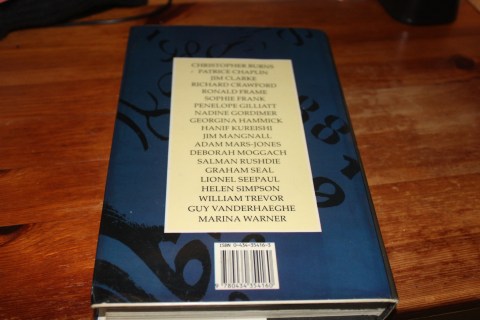Easter Sunday is one of the two days a year when I engage in Pascal’s wager. This is because attending Christian service twice a year (the other date is Christmas) is, in some denominations, the minimal requirement for being considered a Christian.
This got me thinking whether it was possible to hack religion more broadly. What, in other words, are the minimal requirements to be considered a legitimate member of other world religions?
Firstly, in order to address the immediate objections of the devout, of course such an approach is not really ‘in good faith’ as it were. Furthermore, obviously certain contradictions immediately arise for anyone claiming to be an adherent of more than one faith-based belief system. After all they don’t agree with one another!
But one may equally argue that Pascal’s wager itself is not proposed in good faith either. And in any case, if we assume, as most religious people do, the existence of one or more deities, then one must also presume that the pertinent god or gods are entirely aware of the inherent dishonesty of such an approach (though this is not necessarily a disqualifying factor in some faiths.)
One bon mot often offered by atheists and occasionally agnostics to the religious is the sarcastic agreement that they concur with the devotee that all bar one god does not exist. Therefore their disagreement relates solely to that one final deity and the related belief system. It’s witty because it highlights the revelatory nature of religious knowledge and belief, the illogical component that this rather than that or indeed any other faith is solely correct.
But what if we were to jettison such narrow and unecumenical thinking? In other words, if we were to attempt to maximise our Pascal’s wager, how might we go about it? As mentioned above, two attendances at Church per year suffices to be Christian in some quarters. This is not an onerous requirement really. But what about other religions?
Islam is an interesting case. Generally, in practice, multiple daily prayers and weekly attendance at the mosque is expected. However, doctrinally, simply submitting to Allah is sufficient to be considered Muslim. Even better, that submission need not even be made in good faith, so long as the behaviour expected of good Muslims is also observed. Hence, it is possible to simply profess the shahada, the statement of belief in Allah, in order to become Muslim.
Buddhism likewise can be adhered to without major commitment of time or other resources. There are, as might be expected in a religion with such a wide range of variants, an equally wide range of expectations of Buddhists. To some, simply being alive makes one a Buddhist already. To others, seeking refuge in the ‘three jewels’, the triratna, that is the Buddha, the dharma (doctrine, or teaching), and the sangha (the monastic order, or community), is all that is needed. In practice, this involves turning to the Buddha, Buddhist teachings, and Buddhist community for guidance. This is a little more commitment than the monotheisms require, but again, arguably not overly onerous.
Hinduism, as a variegated collection of interlinked polytheist beliefs, is also a little difficult to pin down in terms of minimal requirements. However, in many cases, the eternal duty, or Sanata Dharma, is all that need be adhered to. This is the requirement to avoid malevolence to all living creatures, and treat them instead with compassion, charity and generosity. Quite a high bar, behaviour-wise, but doctrinally quite easy to accept.
Judaism is a much trickier affair. Generally, one must be born Jewish to be considered Jewish (and the nature of proving that descent is not always straightforward – matrilineal descent from a Jewish mother is generally required.) For others, a process of conversion is necessary, and this process – known as giyur – is far from easy. Judaism as a belief takes a range of forms, from Orthodoxy to Reform, and not all accept conversion. Furthermore, conversion even where possible is a protracted process generally undergone under rabbinical guidance, and even when successful then requires that the convert, among other requirements, adheres to all 613 mitzvot (commandments) of the Torah.
I’ve yet to explore properly the requirements of other religions, such as Sikhism, Baha’i, Jainism, Shinto or any of the traditional African or Chinese faiths and animisms. I fully expect that again, they would require a process of commitment to behaving well towards others, the requirement to engage with the religious community, and perhaps a conversion process also.
But it does seem to me possible in principle at least to hack religion in a manner than expands Pascal’s Wager outward, and in the spirit of the original wager if not of the religions themselves.
I’m not sure if this means that the world’s religious faiths are a little more accommodating than generally understood, or if both Pascal and I are much more cynical than the world needs people to be. Perhaps both. In any case, a happy Easter, Ramadan, Passover or simply Sunday to people of all religions, one religion, or none.













